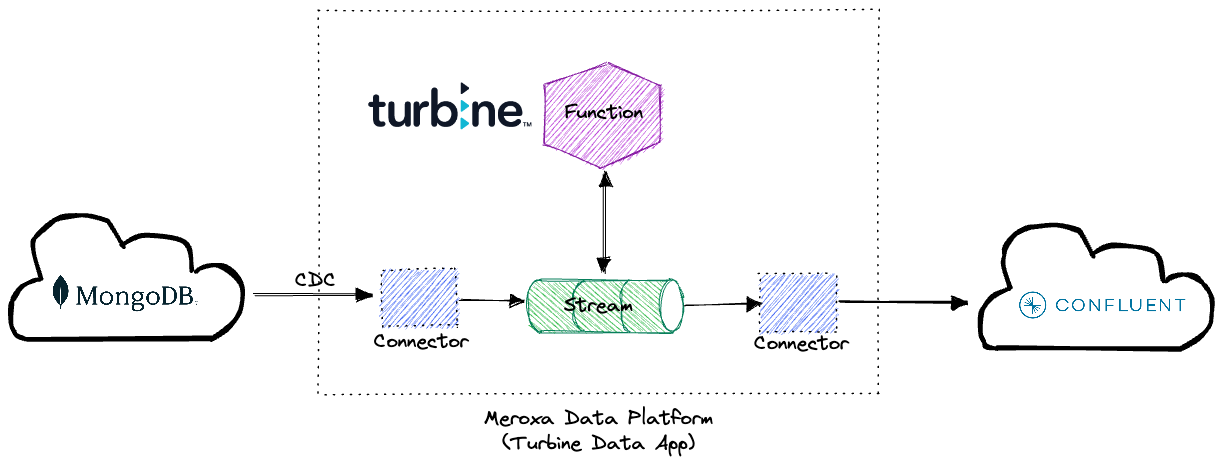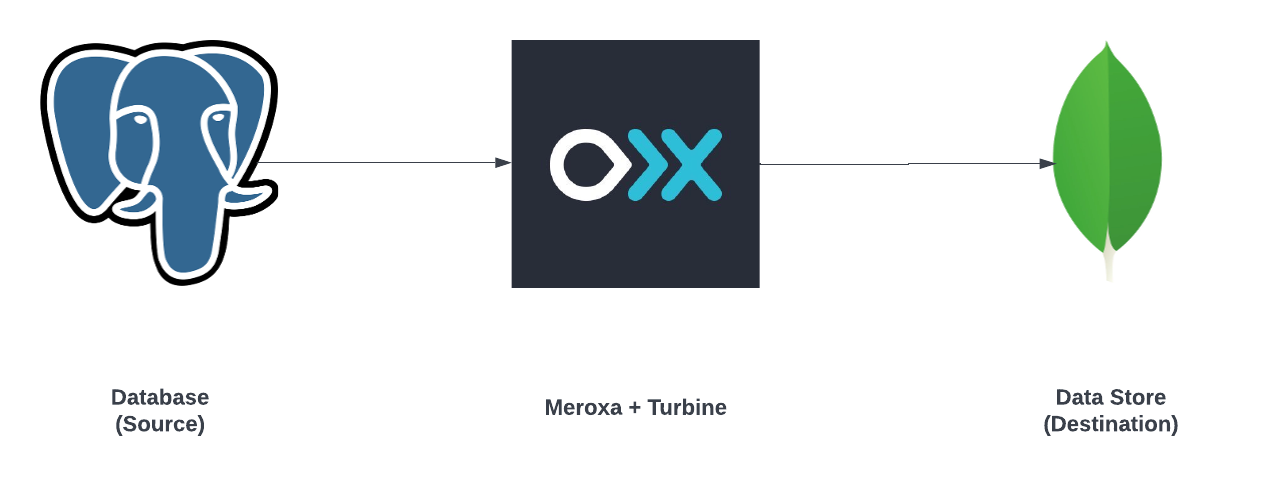
As modern enterprises migrate to the cloud, they are often faced with an overwhelming number of vendor choices. Unfortunately, some companies make this critical vendor decision based on the products and services needed at that moment. This myopic approach leads to vendor lock-in.
Vendor lock-in is being stuck with a vendor that is no longer aligned with your goals and needs. Forbes puts it this way:
“It essentially forces an organization to continue staying with a vendor, whether due to the exorbitant cost of switching providers or the potential interruption that could occur from a change.”
In this post, we’ll look at the risks associated with vendor lock-in along with possible options to avoid those risks. Finally, we’ll see how Meroxa’s stream processing data application platform can help break your data free from vendor lock-in.
The risks and consequences of vendor lock-in
The pain of vendor lock-in becomes acute when your vendor cannot interact with your proprietary systems, open-source systems, or with those from another vendor. The negative outcomes of vendor lock-in may include:
- Mounting costs and erosion of your bargaining edge.
- Lack of flexibility to move to a different vendor, as the migration effort brings added cost, increased risk, and extended timelines.
- Reduced service levels, as a vendor experiences outages but has little incentive to provide a resolution.
- An incompatible tech stack, leading to difficulty in configuring free-flow systems.
- The risk of losing access to data, applications, and other resources, if the vendor goes out of business.
- The inability to leverage other vendors, which might offer better technology or pricing.
As we look at this extensive list of risks, we see the importance of carefully assessing the long-term implications of selecting the right vendor. How might an organization avoid these risks when it’s time to choose a vendor?
Avoid the risks of vendor lock-in
No organization intends to get stuck with a vendor and become forced to look for remediation measures later. To help guard against vendor lock-in at decision time, here are some key steps that enterprises can take:
- When evaluating vendors, prepare a list of key non-negotiable attributes, such as cost, performance, features, and upward/downward compatibility.
- Look for cloud services and platforms that use open standards and have broad industry support, making it easier to switch to another provider if needed.
- Choose service providers that make it easy to export and import data between providers.
- Review your cloud strategy regularly to evaluate whether your current provider continues to meet business needs.
- Negotiate for flexibility in contracts to allow for switching providers in the future, whenever possible.
- Prepare backup storage and computing resources for critical business processes, decoupling them from vendor-specific dependencies.
- Establish a fallback plan with a strategy to migrate quickly in case your vendor closes its doors. Put simply: Always be exit-ready.
These measures focus on taking the right action the first time, thereby ensuring that your data, applications, and other resources are portable and flexible. While the suggested steps can certainly alleviate the risks of cloud vendor lock-in, you have no guarantee of avoiding vendor lock-in completely.
So what should organizations do if they are already locked in? What tools can help organizations liberate their applications and their data?
It’s important to note that liberation doesn’t mean abandoning your existing vendor. Rather, we want to empower an organization by decoupling the business KPIs from vendor performance and becoming agile in the process.
Meroxa is one such tool that solves the vendor lock-in problem. It allows organizations to utilize the best of the available products and services from multiple cloud providers while maintaining the free flow of data across the organization. Let’s look at how Meroxa does this.
How Meroxa liberates your data from vendor lock-in
Meroxa provides organizations with a unified and abstract view of their data—even as it’s stored in multiple cloud providers—thereby making it easier to move and manage data across different platforms.
By providing services such as data integration, orchestration, and stream processing, Meroxa enables organizations to take control of their data without being tied to a single vendor. As an end-to-end platform, Meroxa enables easy access, security, and governance of data across multiple vendors.
Among the tools and services provided by Meroxa, we’ll focus on Conduit and the Meroxa platform, both of which help organizations to move data among cloud platforms, bringing ease of switching between providers as needed.
Data integration with Conduit
Conduit is a low-level, open-source data streaming tool that helps developers move data across systems. Whether an organization needs to move data between databases, files, or APIs, Conduit supports all kinds of data motion. Conduit already ships with an extensive set of built-in connectors, but you can also write your own connectors—in any language—for custom data integrations.
One common use case for Conduit is data migration from Apache Kafka to PostgreSQL, an effort that would otherwise require extensive development, testing, and troubleshooting.
Stream processing applications with the Meroxa platform
Meroxa is a platform as a service that enables developers to declaratively orchestrate end-to-end streaming data movement and processing via a programming language of their choice. All of the needed functionality is encapsulated in an application framework called Turbine. Developers build, test, and deploy their Turbine applications to the Meroxa platform— and the platform takes care of the rest. The Turbine framework not only enables integration with popular tools and platforms, but it also supports the use of highly specialized tools, such as thatDot Novelty Detector.
Let’s look at two typical use cases for Meroxa, seeing how it enables easy stream processing between two distinct systems.
Streaming changes in real-time from MongoDB to Apache Kafka 
A Change Data Capture (CDC) connector is created from the Meroxa platform and applied to a MongoDB Atlas-hosted database. That connector is used by a Turbine Stream Processing Data App that receives changes in real-time and publishes them as a stream. The Turbine library enables developers to write transformations on this stream, which then continues to a downstream Kafka cluster.
Real-time data migration and transformation from PostgreSQL to MongoDB 
In this Turbine app, developers create a CDC connector and apply it to a PostgreSQL database to receive real-time updates and publish them in the form of a stream. The Turbine application can perform transformations as necessary and then subsequently stream this data to MongoDB in real-time.
Following a recent update, Meroxa has gone a step further to provide developers with real-time visualization tools, allowing them to see what’s happening behind the scenes in their deployed Turbine applications. Developers can see through dashboards and visualizations how data flows from sources through processing functions and on to destinations.
Conclusion
The risks associated with vendor lock-in often outweigh the benefit of simplicity that comes with using a single vendor. Organizations have long faced the consequences of vendor lock-in, and they see the value of taking the necessary steps to avoid being stuck with the wrong vendor for the job.
In this post, we’ve highlighted the difficulty that comes with transitioning from a vendor when it no longer aligns well with your business or technological requirements. While we considered the steps you can take to minimize the risk, vendor lock-in is always a possibility.
Fortunately, Meroxa provides enterprises with tools to liberate their data, decoupling that data from any specific vendor. Tools such as Conduit and Meroxa help with data integration, data movement, and data processing, within and across all cloud services and providers.
To see how Meroxa can solve vendor lock-in concerns specific to your organization, schedule a call with our experts.